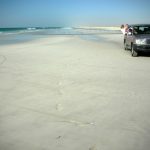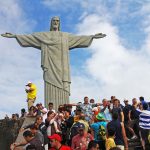Colca Canyon, Peru (21.05.16)
Peru’s Colca Canyon, while claiming to be the deepest in the world, is also one of South America’s most spectacular natural phenomena. Surrounded by the sort of landscape you expect from legends, with sheer-drop mountain views and a unique collection of flora and fauna, the canyon and surrounding valleys boast a cultural pedigree to match any of the Andean spiritual destinations.

The canyon is home to the famous Andean condor, a bird that majestically swirls up on early morning thermals to hunt for prey thousands of metres above the narrow gorges. The impressive Huari pre-Inca terracing, which dominates the valley landscape, is farmed to this day by Quechua-speaking Cabanas as effectively as it has been over the centuries by previous generations.
So strong are the ancestral traditions of the Collagua and Cabana people that it feels as if the whole Colca Canyon region is trapped in an indigenous time warp. The first passable road links to the outside world were built in the 1940s but it was not until the building of the Majes Hydroelectric Project in the 1970s and 80s that the Colca Canyon Valley became truly integrated with the outside world.

Tourism soon followed as word of the spectacular valley gathered pace. So much so that in the last sixty years, visitor numbers have risen from just a few thousand to over 150,000 a year.
Core to the region is the Majes River that starts in the east, amid farmers’ fields and paddies, before approaching steep gorge ravines and thrashing rapids below. I fell in love with the whole area the first time I visited, enjoying gentle valley walks with exciting valley views, as much as river gorge exploration.
Steadily travelling westwards, from the spaghetti western style town of Chivay, you soon realise how reliant on the surrounding landscape the local communities are. As these photos show, the settlements of Yanque, Ichupampa, Achona, Maca, Lari, Madrigaal and Pinchollo cling to the meandering Majes River, hugging the mountainside as intensely as they farm the surrounding terraces.

Once you approach the Cruz del Condor section of the Canyon it becomes apparent that the massive canyon chasm below is as good as impassable, with the deepest section reaching down 3,270 metres (twice as deep as the Grand Canyon).
Whether planning to explore, relax or birdwatch to your heart’s content, we at Nomadic Thoughts always recommend at least four days in the region.

Llamas, vicuna and alpaca also range free here, but the flight of the condors are the main treat of any visit to the Colca Canyon region. With their vast two metre wing span, they are unable to fly between the narrow gorges. They waft up on invisible corkscrew thermals, from the bowels of the deep dark canyon, eventually appearing like distant dots before climbing the additional thousands of metres on natural currents. If you are lucky, they may pass you like mythical gliders, barely an arm’s distance away from where you stand, on the high cliffs of the Cruz del Condor peak itself.




























